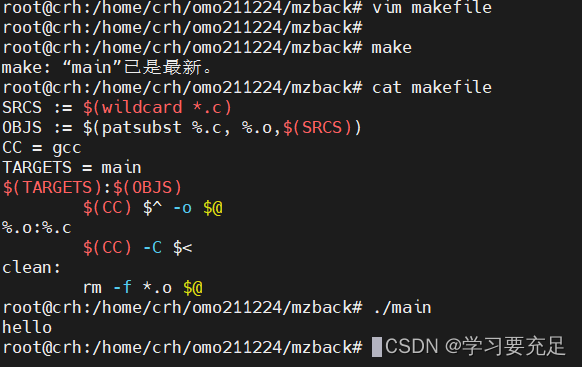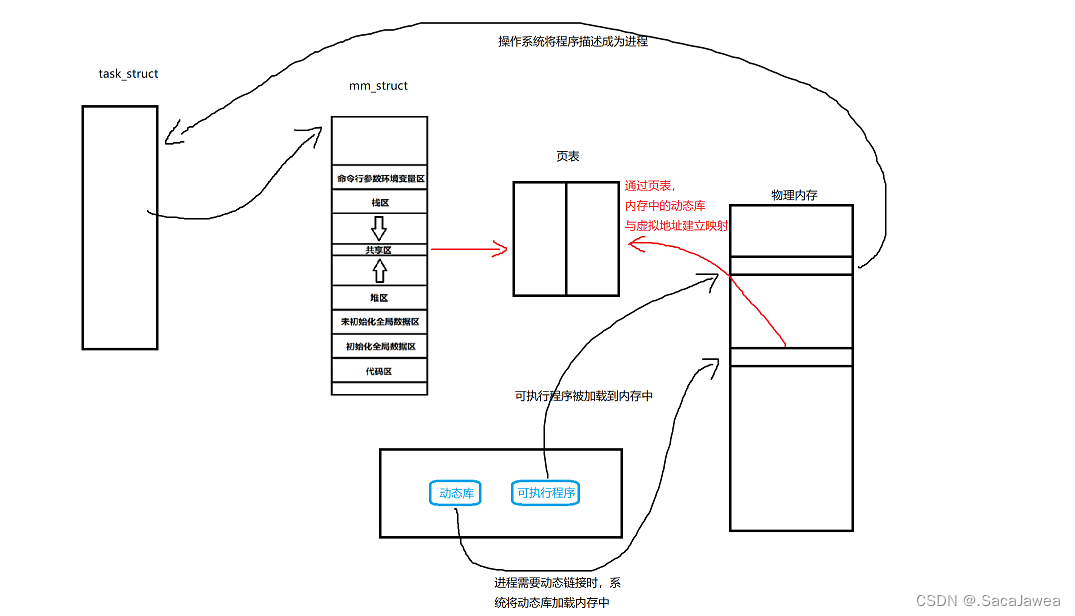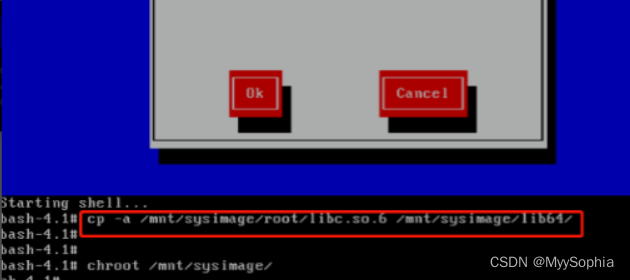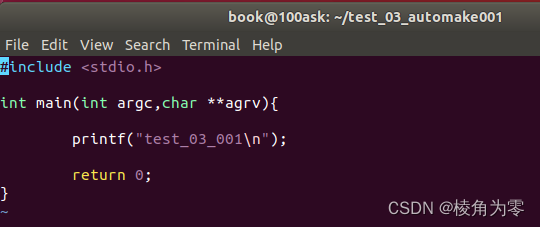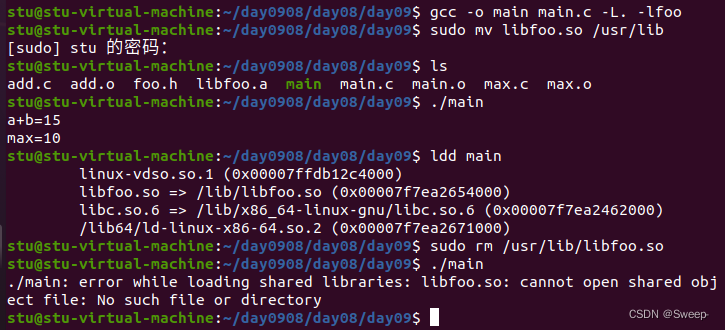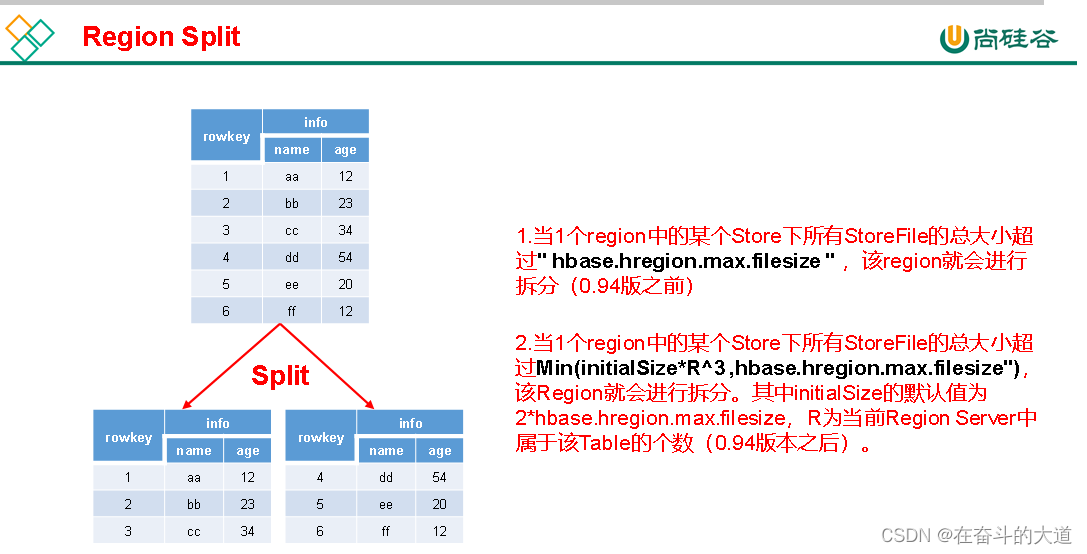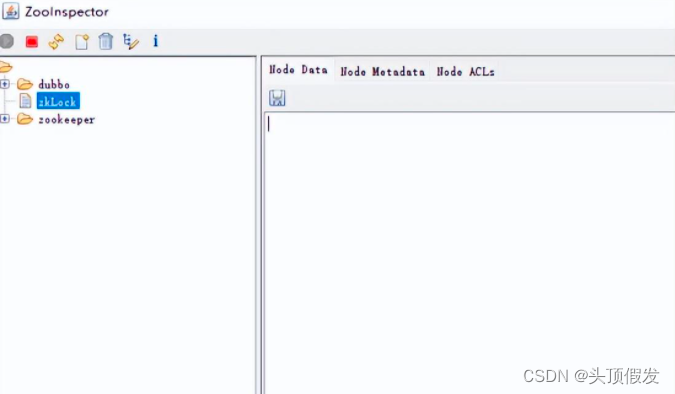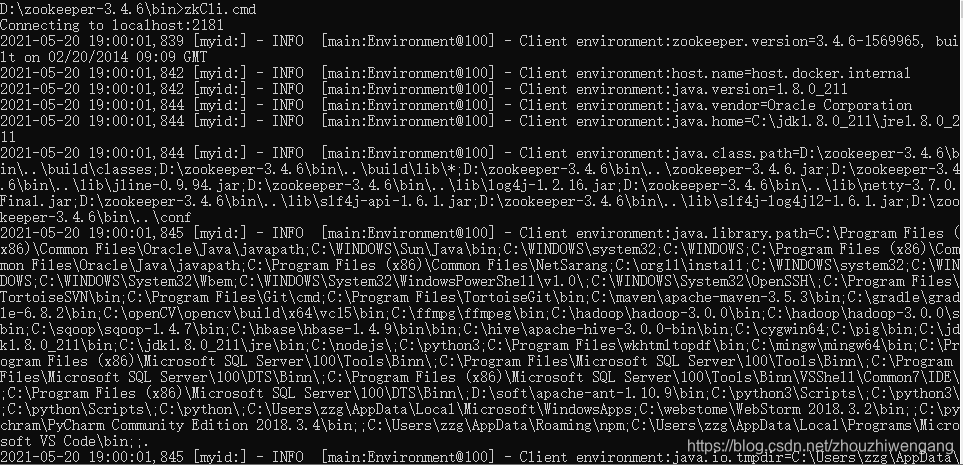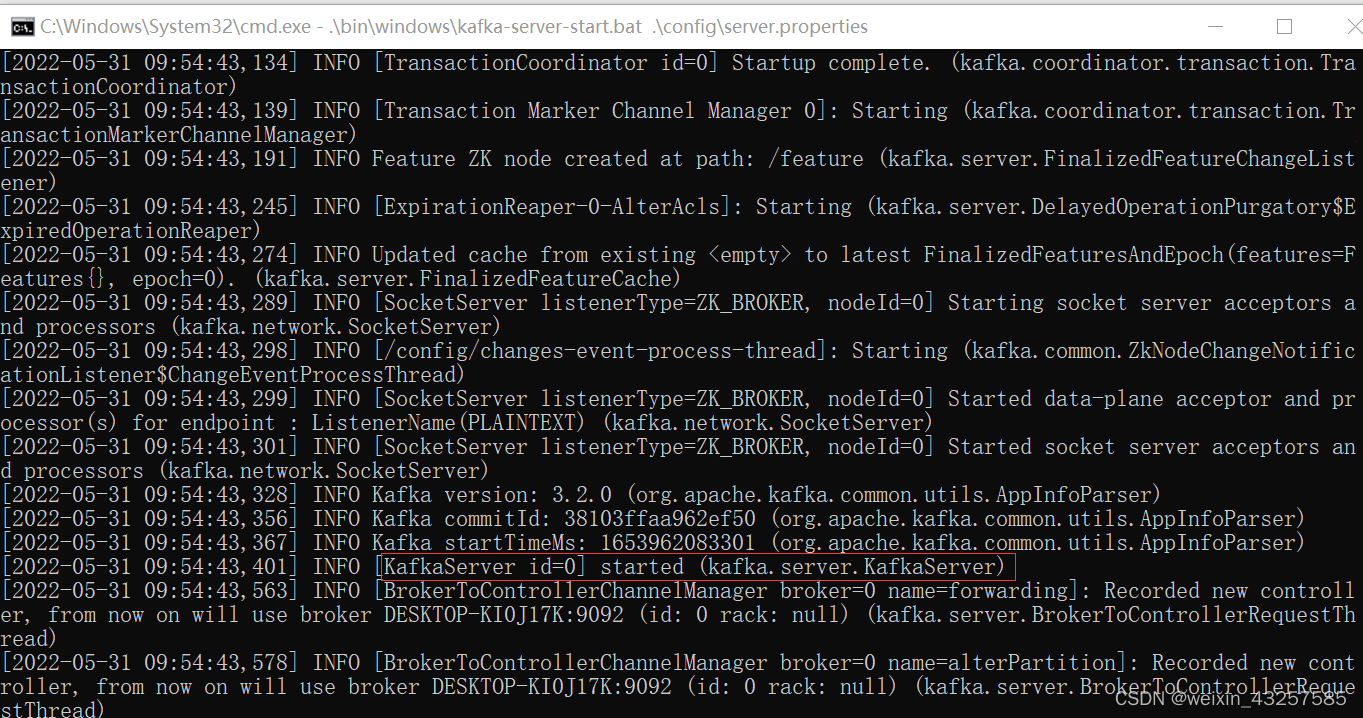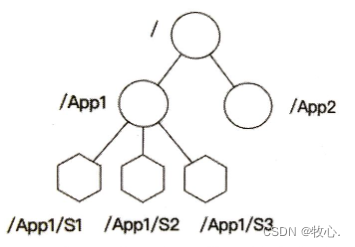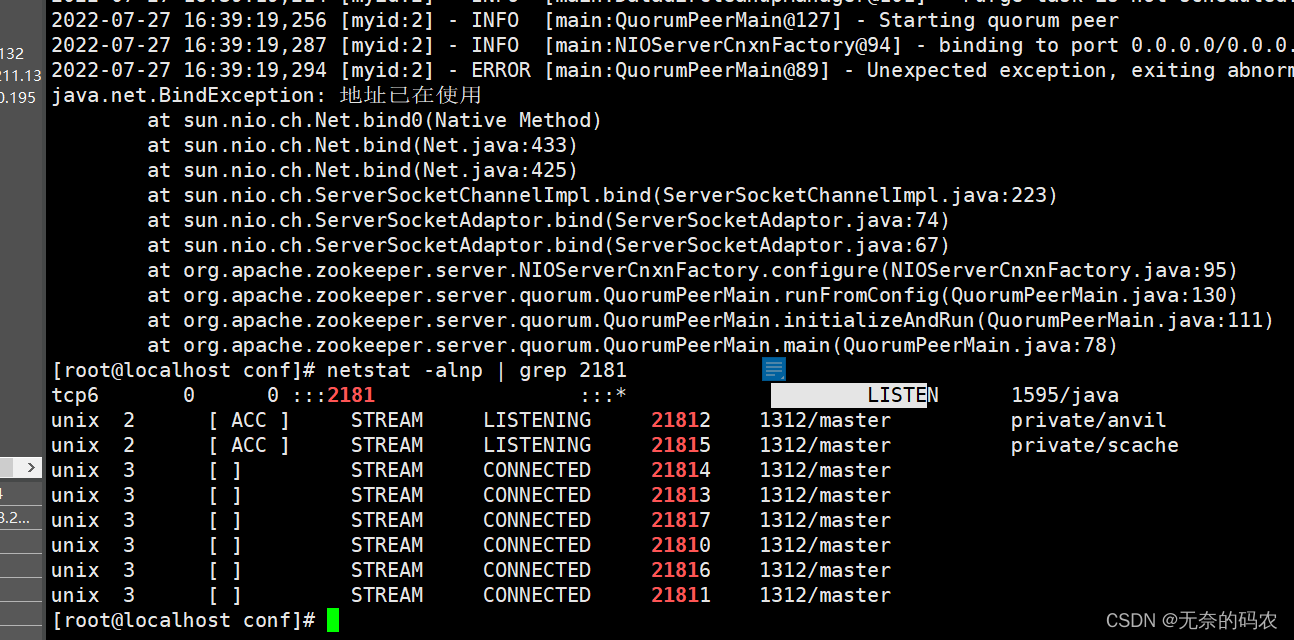关于libusb开源库的使用
文章目录
- 关于libusb开源库的使用
- 1. 概述
- 1.1 介绍
- 1.2 用法
- 2. API接口
- 2.1 分类
- 2.2 初始化/反初始化
- 2.3 获取设备
- 2.4 打开/关闭设备
- 2.5 根据ID打开设备
- 2.6 描述符相关函数
- 2.6.1 获得设备描述符
- 2.6.2 获得/释放配置描述符
- 2.7 detach/attach驱动
- 2.7.1 两种方法
- 2.7.2 函数原型
- 2.8 同步传输函数
- 2.8.1 控制传输
- 2.8.2 批量传输
- 2.8.3 中断传输
- 2.9 异步传输函数
- 2.9.1 使用步骤
- 2.9.2 分配transfer结构体
- 2.9.3 填充控制传输
- 2.9.4 填充批量传输
- 2.9.5 填充中断传输
- 2.9.6 填充实时传输
- 2.9.7 提交传输
- 2.9.8 处理事件
- 2.9.9 释放transfer结构体
- 3. 使用示例
- 3.1 dnw工具
- 3.2 openocd
- 3.2.1 找到设备
- 3.2.2 读写数据
- 致谢
参考资料:
- 《圈圈教你玩USB》
- 简书jianshu_kevin@126.com的文章
- USB协议(一)
- USB协议(二)
- USB协议(三)
- 官网

- libusb GIT仓库
- libusb 官网
- libusb API接口
- libusb 示例
1. 概述
1.1 介绍
libusb是一个使用C编写的库,它提供USB设备的通用的访问方法。APP通过它,可以方便地访问USB设备,无需编写USB设备驱动程序。
- 可移植性:支持Linux、macOS、Windows、Android、OpenBSD等
- 用户模式:APP不需要特权模式、也不需要提升自己的权限即可访问USB设备
- 支持所有USB协议:从1.0到3.1都支持
libusb支持所有的传输类型(控制/批量/中断/实时),有两类API接口:同步(Synchronous,简单),异步(Asynchronous,复杂但是更强大)。它是轻量级的、线程安全的。还支持热拔插。
1.2 用法
可以通过libusb访问USB设备,不需要USB设备端的驱动程序,需要移除原来的驱动程序。然后就可以直接访问USB控制器的驱动程序,使用open/read/write/ioctl/close这些接口来打开设备、收发数据、关闭设备。
libusb封装了更好用的函数,这些函数的使用可以分为5个步骤:
- 初始化
- 打开设备
- 移除原驱动/认领接口
- 传输
- 关闭设备

2. API接口
2.1 分类
libusb的接口函数分为两类:同步(Synchronous device I/O)、异步(Asynchronous device I/O)。
USB数据传输分为两个步骤,对于读数据,先给设备发出数据的请求,一段时间后数据返回;对于写数据,先发送数据给设备,一段时间后得到回应。
同步接口的核心在于把上述两个步骤放在一个函数里面。比如想去读取一个USB键盘的数据,给键盘发出读请求后,如果用户一直没有按下键盘,那么读函数会一直等待。
异步接口的核心在于把上述两个步骤分开:使用一个非阻塞的函数启动传输,它会立刻返回;提供一个回调函数用来处理返回结果。
同步接口的示例代码如下,在libusb_bulk_transfer函数内部,如果没有数据则会休眠:
unsigned char data[4];
int actual_length;
int r = libusb_bulk_transfer(dev_handle, LIBUSB_ENDPOINT_IN, data, sizeof(data), &actual_length, 0);
if (r == 0 && actual_length == sizeof(data)) {// 接收到的数据保存在data数组里// 解析这些数据就可以知道按键状态
} else {error();
}
使用同步接口时,代码比较简单。但是无法实现"多endpoint"的操作:上一个endpoint的传输在休眠,除非使用另一个线程,否则在同一个线程内部在等待期间是无法操作另一个endpoint的。还有另一个缺点:无法取消传输。
异步接口是在libusb-1.0引入的新性能,接口更复杂,但是功能更强大。在异步接口函数里,它启动传输、设置回调函数后就立刻返回。等"读到数据"或是"得到回应"后,回调函数被调用。发起数据传输的线程无需休眠等待结果,它支持"多endpoint"的操作,也支持取消传输。
2.2 初始化/反初始化
/** \ingroup libusb_lib* 初始化libusb,这个函数必须先于其他libusb的函数执行** 如果传入NULL,那么函数内部会穿件一个默认的context* 如果已经创建过默认的context,这个context会被重新使用(不会重新初始化它)** 参数:* ctx : context pointer的位置,也可以传入NULL* 返回值* 0 - 成功* 负数 - 失败*/
int API_EXPORTED libusb_init(libusb_context **ctx);
初始化libusb,参数是一个"a context pointer"的指针,如果这个参数为NULL,则函数内部会创建一个"default context"。所谓"libusb context"就是libusb上下文,就是一个结构体,里面保存有各类信息,比如:libusb的调试信息是否需要打印、各种互斥锁、各类链表(用来记录USB传输等等)。
程序退出前,调用如下函数:
/** \ingroup libusb_lib* 发初始化libusb* 在关闭usb设备(libusb_close)后、退出程序前调用此函数** 参数:* ctx : context, 传入NULL表示default context*/
void API_EXPORTED libusb_exit(libusb_context *ctx);
2.3 获取设备
可以使用libusb_get_device_list取出所有设备,函数接口如下:
/** @ingroup libusb_dev* 返回一个list,list里含有当前系统中所有的USB设备** 我们一般会在list里寻找需要访问的设备,找到之后使用libusb_open函数打开它* 然后调用libusb_free_device_list释放list** 这个函数的返回值表示list中有多少个设备* list的最后一项是NULL** 参数:* ctx : context* list : output location for a list of devices, 最后必须调用libusb_free_device_list()来释放它* 返回值: list中设备的个数, 或错误值*/
ssize_t API_EXPORTED libusb_get_device_list(libusb_context *ctx,libusb_device ***list);
调用此函数后,所有设备的信息存入list,然后遍历list,找到想操作的设备。这个函数内部会分配list的空间,所以用完后要释放掉,使用以下函数释放:
/** \ingroup libusb_dev* 前面使用libusb_get_device_list()获得了设备list, * 使用完后要调用libusb_free_device_list()释放这个list* 如果参数unref_devices为1, 则list中每个设备的引用计数值减小1* 参数: * list : 要释放的设备list* unref_devices : 是否要将设备的引用计数减1*/
void API_EXPORTED libusb_free_device_list(libusb_device **list,int unref_devices);
2.4 打开/关闭设备
使用libusb_get_device_list得到设备列表后,可以选择里面的某个设备,然后调用libusb_open:
/** \ingroup libusb_dev* 打开一个设备并得到它的句柄, 以后进行IO操作时都是使用句柄** 使用libusb_get_device()函数可以得到设备的list, * 从list里确定你要访问的设备后, 使用libusb_open()去打开它。* libusb_open()函数内部会增加此设备的引用计数, 使用完毕后要调用libusb_close()减小引用计数。** 参数:* dev : 要打开的设备* dev_handle : 输出参数, 用来保存句柄* 返回值: * 0 - 成功* LIBUSB_ERROR_NO_MEM : 缺少内存* LIBUSB_ERROR_ACCESS : 权限不足* LIBUSB_ERROR_NO_DEVICE : 这个设备未连接* 其他错误 : 其他LIBUSB_ERROR错误码*/
int API_EXPORTED libusb_open(libusb_device *dev,libusb_device_handle **dev_handle);
使用libusb_open函数打开USB设备后,可以得到一个句柄:libusb_device_handle。以后调用各种数据传输函数时,就是使用libusb_device_handle。
使用完毕后,调用libusb_close关闭设备,函数原型如下:
/** \ingroup libusb_dev* 关闭设备句柄, 在程序退出之前应该使用它去关闭已经打开的句柄** 设备的引用计数在前面被libusb_open()函数增加了。* 在libusb_close()函数的内部,它会减小设备的引用计数。** 参数: dev_handle - 句柄*/
void API_EXPORTED libusb_close(libusb_device_handle *dev_handle);
2.5 根据ID打开设备
如果知道设备的VID、PID,那么可以使用libusb_open_device_with_vid_pid来找到它、打开它。这个函数的内部,先使用libusb_get_device_list列出所有设备,然后遍历它们根据ID选出设备,接着调用libusb_open打开它,最后调用libusb_free_device_list释放设备。
libusb_open_device_with_vid_pid函数原型如下:
/** \ingroup libusb_dev* 打开设备的常规做法是使用libusb_get_device_list()得到设备list,* 然后遍历list,找到设备* 接着使用libusb_open()函数得到句柄* * 如果知道USB设备的VID、PID,那么可以使用libusb_open_device_with_vid_pid()函数快速打开它,得到句柄。* * 这个函数有一个缺点: 如果系统中有多个ID相同的设备,你只能打开第1个设备** 参数:* ctx : context, 或者传入NULL以使用默认的context* vendor_id : 厂家ID* product_id : 产品ID* * 返回值: * 句柄 - 找到的第1个设备的句柄* NULL - 没有找到设备*/
DEFAULT_VISIBILITY
libusb_device_handle * LIBUSB_CALL libusb_open_device_with_vid_pid(libusb_context *ctx, uint16_t vendor_id, uint16_t product_id);
2.6 描述符相关函数
2.6.1 获得设备描述符
/** \ingroup libusb_desc* 获得设备描述符** 参数:* dev - 哪个设备* desc - 输出参数, 用来保存设备描述符** 返回值:* 0 - 成功, 或其他LIBUSB_ERROR错误码*/
int API_EXPORTED libusb_get_device_descriptor(libusb_device *dev,struct libusb_device_descriptor *desc);
2.6.2 获得/释放配置描述符
/** \ingroup libusb_desc* 获得指定的配置描述符** 参数:* dev - 哪个设备* config_index - 哪个配置* config - 输出参数, 用来保存配置描述符, 使用完毕要调用libusb_free_config_descriptor()释放掉* * 返回值:* 0 - 成功* LIBUSB_ERROR_NOT_FOUND - 没有这个配置* 其他LIBUSB_ERROR错误码*/
int API_EXPORTED libusb_get_config_descriptor(libusb_device *dev,uint8_t config_index, struct libusb_config_descriptor **config);/** \ingroup libusb_desc* Free a configuration descriptor obtained from* 前面使用libusb_get_active_config_descriptor()或libusb_get_config_descriptor()获得配置描述符,* 用完后调用libusb_free_config_descriptor()释放掉*/
void API_EXPORTED libusb_free_config_descriptor(struct libusb_config_descriptor *config);
2.7 detach/attach驱动
2.7.1 两种方法
使用libusb访问USB设备时,需要先移除(detach)设备原来的驱动程序,然后认领接口(claim interface)。有两种办法:
-
方法1:
// 只是设置一个标记位表示libusb_claim_interface // 使用libusb_claim_interface时会detach原来的驱动 libusb_set_auto_detach_kernel_driver(hdev, 1); // 标记这个interface已经被使用认领了 libusb_claim_interface(hdev, interface_number); -
方法2:
// detach原来的驱动 libusb_detach_kernel_driver(hdev, interface_number);// 标记这个interface已经被使用认领了 libusb_claim_interface(hdev, interface_number);
2.7.2 函数原型
函数libusb_detach_kernel_driver原型如下:
/** \ingroup libusb_dev* 给USB设备的接口(interface)移除驱动程序. If successful, you will then be* 移除原来的驱动后才能"claim the interface"、执行IO操作** 实际上libusb会给这个接口安装一个特殊的内核驱动,* 所以本函数"移除驱动"是移除其他驱动,不是移除这个特殊的驱动。* 若干这个接口已经安装了这个特殊的驱动,本函数会返回LIBUSB_ERROR_NOT_FOUND.** 参数:* dev_handle - 设备句柄* interface_number - 哪一个接口* * 返回值:* 0 - 成功* LIBUSB_ERROR_NOT_FOUND - 这个接口没有安装其他驱动* LIBUSB_ERROR_INVALID_PARAM - 没有这个接口* LIBUSB_ERROR_NO_DEVICE - 这个设备未连接* LIBUSB_ERROR_NOT_SUPPORTED - 系统不支持此操作, 比如Windows* 其他LIBUSB_ERROR错误码*/
int API_EXPORTED libusb_detach_kernel_driver(libusb_device_handle *dev_handle,int interface_number);
函数libusb_claim_interface原型如下:
/** \ingroup libusb_dev* libusb使用内核里一个特殊的驱动程序,* libusb_claim_interface()函数就是给某个usb接口安装这个特殊的驱动程序,* 在使用libusb的函数执行IO操作之前必须调用本函数。** 你可以给"已经claim过的接口"再次调用本函数,它直接返回0。** 如果这个接口的auto_detach_kernel_driver被设置为1,* libusb_claim_interface()函数会先移除其他驱动。** 本函数时纯粹的逻辑操作:只是替换接口的驱动程序而已,不会导致USB硬件传输。** 参数:* dev_handle - 句柄, 表示USB设备* interface_number - 接口** 返回值:* 0 - 成功* LIBUSB_ERROR_NOT_FOUND - 没有这个接口* LIBUSB_ERROR_BUSY - 其他APP或者驱动正在使用这个接口* LIBUSB_ERROR_NO_DEVICE - 设备未连接* 其他LIBUSB_ERROR错误码*/
int API_EXPORTED libusb_claim_interface(libusb_device_handle *dev_handle,int interface_number);
使用完USB设备后,在调用libusb_close之前,应该libusb_release_interface释放接口:
/** \ingroup libusb_dev* 前面使用libusb_claim_interface()给接口安装了给libusb使用的特殊驱动程序,* 使用完毕后,在调用libusb_close()关闭句柄之前,* 可以调用libusb_release_interface()卸载特殊驱动程序* 如果设备的auto_detach_kernel_driver为1,还会重新安装普通驱动程序* * 这是一个阻塞函数, 它会给USB设备发送一个请求: SET_INTERFACE control,* 用来把接口的状态复位到第1个setting(the first alternate setting)** 参数:* dev_handle - 设备句柄* interface_number - 哪个接口* * 返回值:* 0 - 成功* LIBUSB_ERROR_NOT_FOUND - 这个接口没有被claim(没有安装特殊的驱动程序)* LIBUSB_ERROR_NO_DEVICE - 设备未连接* 其他LIBUSB_ERROR错误码*/
int API_EXPORTED libusb_release_interface(libusb_device_handle *dev_handle,int interface_number);
2.8 同步传输函数
2.8.1 控制传输
/** \ingroup libusb_syncio* 启动控制传输** 传输方向在bmRequestType里* wValue,wIndex和wLength是host-endian字节序** 参数:* dev_handle - 设备句柄* bmRequestType - setup数据包的bmRequestType域* bRequest - setup数据包的bRequest域* wValue - setup数据包的wValue域* wIndex - setup数据包的wIndex域* data - 保存数据的buffer, 可以是in、out数据* wLength - setup数据包的wLength域* timeout - 超时时间(单位ms),就是这个函数能等待的最大时间; 0表示一直等待直到成功* * 返回值:* 正整数 - 成功传输的数据的长度* LIBUSB_ERROR_TIMEOUT - 超时* LIBUSB_ERROR_PIPE - 设备不支持该请求* LIBUSB_ERROR_NO_DEVICE - 设备未连接* LIBUSB_ERROR_BUSY - 如果这个函数时在事件处理上下文(event handling context)里则返回这个错误* LIBUSB_ERROR_INVALID_PARAM - 传输的字节超过OS或硬件的支持* the operating system and/or hardware can support (see \ref asynclimits)* 其他LIBUSB_ERROR错误码*/
int API_EXPORTED libusb_control_transfer(libusb_device_handle *dev_handle,uint8_t bmRequestType, uint8_t bRequest, uint16_t wValue, uint16_t wIndex,unsigned char *data, uint16_t wLength, unsigned int timeout);
2.8.2 批量传输
/** \ingroup libusb_syncio* 启动批量传输* 传输方向在endpoint的"方向位"里表示** 对于批量读,参数length表示"期望读到的数据最大长度", 实际读到的长度保存在transferred参数里** 对于批量写, transferred参数表示实际发送出去的数据长度** 发生超时错误时,也应该检查transferred参数。* libusb会根据硬件的特点把数据拆分为一小段一小段地发送出去,* 这意味着发送满某段数据后可能就发生超时错误,需要根据transferred参数判断传输了多少数据。** 参数:* dev_handle - 设备句柄* endpoint - 端点* data - 保存数据的buffer, 可以是in、out数据* length - 对于批量写,它表示要发送的数据长度; 对于批量读,它表示"要读的数据的最大长度"* transferred - 输出参数,表示实际传输的数据长度* timeout - 超时时间(单位ms),就是这个函数能等待的最大时间; 0表示一直等待直到成功** 返回值:* 0 - 成功,根据transferred参数判断传输了多少长度的数据* LIBUSB_ERROR_TIMEOUT - 超时, 根据transferred参数判断传输了多少长度的数据* LIBUSB_ERROR_PIPE - 端点错误,端点被挂起了* LIBUSB_ERROR_OVERFLOW - 溢出,设备提供的数据太多了* LIBUSB_ERROR_NO_DEVICE - 设备未连接* LIBUSB_ERROR_BUSY - 如果这个函数时在事件处理上下文(event handling context)里则返回这个错误* LIBUSB_ERROR_INVALID_PARAM - 传输的字节超过OS或硬件的支持* 其他LIBUSB_ERROR错误码*/
int API_EXPORTED libusb_bulk_transfer(libusb_device_handle *dev_handle,unsigned char endpoint, unsigned char *data, int length,int *transferred, unsigned int timeout);
2.8.3 中断传输
/** \ingroup libusb_syncio* 启动中断传输* 传输方向在endpoint的"方向位"里表示** 对于中断读,参数length表示"期望读到的数据最大长度", 实际读到的长度保存在transferred参数里** 对于中断写, transferred参数表示实际发送出去的数据长度,不一定能发送完全部数据。** 发生超时错误时,也应该检查transferred参数。* libusb会根据硬件的特点把数据拆分为一小段一小段地发送出去,* 这意味着发送满某段数据后可能就发生超时错误,需要根据transferred参数判断传输了多少数据。** 参数:* dev_handle - 设备句柄* endpoint - 端点* data - 保存数据的buffer, 可以是in、out数据* length - 对于批量写,它表示要发送的数据长度; 对于批量读,它表示"要读的数据的最大长度"* transferred - 输出参数,表示实际传输的数据长度* timeout - 超时时间(单位ms),就是这个函数能等待的最大时间; 0表示一直等待直到成功** 返回值:* 0 - 成功,根据transferred参数判断传输了多少长度的数据* LIBUSB_ERROR_TIMEOUT - 超时, 根据transferred参数判断传输了多少长度的数据* LIBUSB_ERROR_PIPE - 端点错误,端点被挂起了* LIBUSB_ERROR_OVERFLOW - 溢出,设备提供的数据太多了* LIBUSB_ERROR_NO_DEVICE - 设备未连接* LIBUSB_ERROR_BUSY - 如果这个函数时在事件处理上下文(event handling context)里则返回这个错误* LIBUSB_ERROR_INVALID_PARAM - 传输的字节超过OS或硬件的支持* 其他LIBUSB_ERROR错误码*/
int API_EXPORTED libusb_interrupt_transfer(libusb_device_handle *dev_handle,unsigned char endpoint, unsigned char *data, int length,int *transferred, unsigned int timeout);
2.9 异步传输函数
2.9.1 使用步骤
使用libusb的异步函数时,有如下步骤:
- 分配:分配一个
libusb_transfer结构体 - 填充:填充
libusb_transfer结构体,比如想访问哪个endpoint、数据buffer、长度等等 - 提交:提交
libusb_transfer结构体启动传输 - 处理事件:检查传输的结果,调用
libusb_transfer结构体的回调函数 - 释放:释放资源,比如释放
libusb_transfer结构体
2.9.2 分配transfer结构体
/** \ingroup libusb_asyncio* 分配一个libusb_transfer结构体,* 如果iso_packets不为0,还会分配iso_packets个libusb_iso_packet_descriptor结构体* 使用完毕后需要调用libusb_free_transfer()函数释放掉** 对于控制传输、批量传输、中断传输,iso_packets参数需要设置为0** 对于实时传输,需要指定iso_packets参数,* 这个函数会一起分配iso_packets个libusb_iso_packet_descriptor结构体。* 这个函数返回的libusb_transfer结构体并未初始化,* 你还需要初始化它的这些成员:* libusb_transfer::num_iso_packets* libusb_transfer::type** 你可以指定iso_packets参数,意图给实时传输分配结构体,* 但是你可以把这个结构题用于其他类型的传输,* 在这种情况下,只要确保num_iso_packets为0就可以。** 参数:* iso_packets - 分配多少个isochronous packet descriptors to allocate** 返回值:* 返回一个libusb_transfer结构体或NULL*/
DEFAULT_VISIBILITY
struct libusb_transfer * LIBUSB_CALL libusb_alloc_transfer(int iso_packets);
2.9.3 填充控制传输
/** \ingroup libusb_asyncio* 构造控制传输结构体** 如果你传入buffer参数,那么buffer的前面8字节会被当做"control setup packet"来解析,* buffer的最后2字节表示wLength,它也会被用来设置libusb_transfer::length* 所以,建议使用流程如下:* 1. 分配buffer,这个buffer的前面8字节对应"control setup packet",后面的空间可以用来保存其他数据* 2. 设置"control setup packet",通过调用libusb_fill_control_setup()函数来设置* 3. 如果是要把数据发送个设备,把要发送的数据放在buffer的后面(从buffer[8]开始放)* 4. 调用libusb_fill_bulk_transfer* 5. 提交传输: 调用libusb_submit_transfer()** 也可以让buffer参数为NULL,* 这种情况下libusb_transfer::length就不会被设置,* 需要手工去设置ibusb_transfer::buffer、ibusb_transfer::length** 参数:* transfer - 要设置的libusb_transfer结构体* dev_handle - 设备句柄* buffer - 数据buffer,如果不是NULL的话,它前面8直接会被当做"control setup packet"来处理,* 也会从buffer[6], buffer[7]把length提取出来,用来设置libusb_transfer::length* 这个buffer必须是2字节对齐* callback - 传输完成时的回调函数* user_data - 传给回调函数的参数* timeout - 超时时间(单位: ms)*/
static inline void libusb_fill_control_transfer(struct libusb_transfer *transfer, libusb_device_handle *dev_handle,unsigned char *buffer, libusb_transfer_cb_fn callback, void *user_data,unsigned int timeout);
2.9.4 填充批量传输
/** \ingroup libusb_asyncio* 构造批量传输结构体** 参数:* transfer - 要设置的libusb_transfer结构体* dev_handle - 设备句柄* endpoint - 端点* buffer - 数据buffer* length - buffer的数据长度* callback - 传输完成时的回调函数* user_data - 传给回调函数的参数* timeout - 超时时间(单位: ms)*/
static inline void libusb_fill_bulk_transfer(struct libusb_transfer *transfer,libusb_device_handle *dev_handle, unsigned char endpoint,unsigned char *buffer, int length, libusb_transfer_cb_fn callback,void *user_data, unsigned int timeout);
2.9.5 填充中断传输
/** \ingroup libusb_asyncio* 构造中断传输结构体** 参数:* transfer - 要设置的libusb_transfer结构体* dev_handle - 设备句柄* endpoint - 端点* buffer - 数据buffer* length - buffer的数据长度* callback - 传输完成时的回调函数* user_data - 传给回调函数的参数* timeout - 超时时间(单位: ms)*/
static inline void libusb_fill_interrupt_transfer(struct libusb_transfer *transfer, libusb_device_handle *dev_handle,unsigned char endpoint, unsigned char *buffer, int length,libusb_transfer_cb_fn callback, void *user_data, unsigned int timeout);
2.9.6 填充实时传输
/** \ingroup libusb_asyncio* 构造实时传输结构体** 参数:* transfer - 要设置的libusb_transfer结构体* dev_handle - 设备句柄* endpoint - 端点* buffer - 数据buffer* length - buffer的数据长度* num_iso_packets - 实时传输包的个数* callback - 传输完成时的回调函数* user_data - 传给回调函数的参数* timeout - 超时时间(单位: ms)*/
static inline void libusb_fill_iso_transfer(struct libusb_transfer *transfer,libusb_device_handle *dev_handle, unsigned char endpoint,unsigned char *buffer, int length, int num_iso_packets,libusb_transfer_cb_fn callback, void *user_data, unsigned int timeout);
2.9.7 提交传输
/** \ingroup libusb_asyncio* 提交传输Submit,这个函数会启动传输,然后立刻返回** 参数:* transfer - 要传输的libusb_transfer结构体** 返回值:* 0 - 成功* LIBUSB_ERROR_NO_DEVICE - 设备未连接* LIBUSB_ERROR_BUSY - 这个传输已经提交过了* LIBUSB_ERROR_NOT_SUPPORTED - 不支持这个传输* LIBUSB_ERROR_INVALID_PARAM - 传输的字节超过OS或硬件的支持* 其他LIBUSB_ERROR错误码*/
int API_EXPORTED libusb_submit_transfer(struct libusb_transfer *transfer);
2.9.8 处理事件
有4个函数,其中2个没有completed后缀的函数过时了:
/** \ingroup libusb_poll* 处理任何"pengding的事件"** 使用异步传输函数时,提交的tranfer结构体后就返回了。* 可以使用本函数处理这些传输的返回结果。** 如果timeval参数为0,本函数会处理"当前、已经pending的事件",然后马上返回。** 如果timeval参数不为0,并且当前没有待处理的事件,本函数会阻塞以等待事件,直到超时。* 在等待过程中,如果事件发生了、或者得到了信号(signal),那么这个函数会提前返回。** completed参数用来避免竞争,如果它不为NULL:* 本函数获得"event handling lock"后,会判断completed指向的数值,* 如果这个数值非0(表示别的线程已经处理了、已经completed了),* 则本函数会立刻返回(既然都completed了,当然无需再处理)** 参数:* ctx - context(如果传入NULL则使用默认context)* tv - 等待事件的最大时间,0表示不等待* completed - 指针,可以传入NULL** 返回值:* 0 - 成功* LIBUSB_ERROR_INVALID_PARAM - timeval参数无效* 其他LIBUSB_ERROR错误码*/
int API_EXPORTED libusb_handle_events_timeout_completed(libusb_context *ctx,struct timeval *tv, int *completed);/** \ingroup libusb_poll* 处理任何"pengding的事件"** 跟libusb_handle_events_timeout_completed()类似,* 就是调用"libusb_handle_events_timeout_completed(ctx, tv, NULL);"* 最后的completed参数为NULL。** 这个函数只是为了保持向后兼容,新的代码建议使用libusb_handle_events_completed()或* libusb_handle_events_timeout_completed(),* 这2个新函数可以处理竞争。** 参数:* ctx - context(如果传入NULL则使用默认context)* tv - 等待事件的最大时间,0表示不等待** 返回值:* 0 - 成功* LIBUSB_ERROR_INVALID_PARAM - timeval参数无效* 其他LIBUSB_ERROR错误码*/
int API_EXPORTED libusb_handle_events_timeout(libusb_context *ctx,struct timeval *tv);/** \ingroup libusb_poll* 处理任何"pengding的事件",以阻塞方式处理(blocking mode)** 本函数的内部实现就是调用: libusb_handle_events_timeout_completed(ctx, &tv, completed);* 超时时间设置为60秒** 参数:* ctx - context(如果传入NULL则使用默认context)* completed - 指针,可以传入NULL** 返回值:* 0 - 成功* LIBUSB_ERROR_INVALID_PARAM - timeval参数无效* 其他LIBUSB_ERROR错误码*/
int API_EXPORTED libusb_handle_events_completed(libusb_context *ctx,int *completed);/** \ingroup libusb_poll* 处理任何"pengding的事件",以阻塞方式处理(blocking mode)** 本函数的内部实现就是调用: libusb_handle_events_timeout_completed(ctx, &tv, NULL);* 超时时间设置为60秒** 这个函数只是为了保持向后兼容,新的代码建议使用libusb_handle_events_completed()或* libusb_handle_events_timeout_completed(),* 这2个新函数可以处理竞争。* * 参数:* ctx - context(如果传入NULL则使用默认context)** 返回值:* 0 - 成功* LIBUSB_ERROR_INVALID_PARAM - timeval参数无效* 其他LIBUSB_ERROR错误码*/
int API_EXPORTED libusb_handle_events(libusb_context *ctx);
2.9.9 释放transfer结构体
传输完毕,需要释放libusb_transfer结构体,如果要重复利用这个结构体则无需释放。
/** \ingroup libusb_asyncio* 释放libusb_transfer结构体* 前面使用libusb_alloc_transfer()分配的结构体,要使用本函数来释放。** 如果libusb_transfer::flags的LIBUSB_TRANSFER_FREE_BUFFER位非0,* 那么会使用free()函数释放ibusb_transfer::buffer* * 不能使用本函数释放一个活动的传输结构体(active, 已经提交尚未结束)* */
void API_EXPORTED libusb_free_transfer(struct libusb_transfer *transfer);
3. 使用示例
在libusb源码的examples目录下有示例程序,我们也有一些真实的案列。
3.1 dnw工具
dnw是s3c2440时代的工具,使用它可以从PC给开发板传输文件。它的核心源码如下,使用同步接口进行数据传输:
/* open the device using libusb */status = libusb_init(NULL);if (status < 0) {printf("libusb_init() failed: %s\n", libusb_error_name(status));return -1;}hdev = libusb_open_device_with_vid_pid(NULL, (uint16_t)DNW_DEVICE_IDVENDOR, (uint16_t)DNW_DEVICE_IDPRODUCT);if (hdev == NULL) {printf("libusb_open() failed\n");goto err3;}/* We need to claim the first interface */libusb_set_auto_detach_kernel_driver(hdev, 1);status = libusb_claim_interface(hdev, 0);if (status != LIBUSB_SUCCESS) {libusb_close(hdev);printf("libusb_claim_interface failed: %s\n", libusb_error_name(status));goto err2;}ret = libusb_bulk_transfer(hdev, 0x03, buf, num_write, &transferred, 3000);
3.2 openocd
openocd是一个开源的USB JTAG调试软件,它也是使用libusb,涉及USB的操作代码如下。
3.2.1 找到设备
static int cmsis_dap_usb_open(struct cmsis_dap *dap, uint16_t vids[], uint16_t pids[], const char *serial)
{int err;struct libusb_context *ctx;struct libusb_device **device_list;err = libusb_init(&ctx);if (err) {LOG_ERROR("libusb initialization failed: %s", libusb_strerror(err));return ERROR_FAIL;}int num_devices = libusb_get_device_list(ctx, &device_list);if (num_devices < 0) {LOG_ERROR("could not enumerate USB devices: %s", libusb_strerror(num_devices));libusb_exit(ctx);return ERROR_FAIL;}for (int i = 0; i < num_devices; i++) {struct libusb_device *dev = device_list[i];struct libusb_device_descriptor dev_desc;err = libusb_get_device_descriptor(dev, &dev_desc);if (err) {LOG_ERROR("could not get device descriptor for device %d: %s", i, libusb_strerror(err));continue;}/* Match VID/PID */bool id_match = false;bool id_filter = vids[0] || pids[0];for (int id = 0; vids[id] || pids[id]; id++) {id_match = !vids[id] || dev_desc.idVendor == vids[id];id_match &= !pids[id] || dev_desc.idProduct == pids[id];if (id_match)break;}if (id_filter && !id_match)continue;/* Don't continue if we asked for a serial number and the device doesn't have one */if (dev_desc.iSerialNumber == 0 && serial && serial[0])continue;struct libusb_device_handle *dev_handle = NULL;err = libusb_open(dev, &dev_handle);if (err) {/* It's to be expected that most USB devices can't be opened* so only report an error if it was explicitly selected*/if (id_filter) {LOG_ERROR("could not open device 0x%04x:0x%04x: %s",dev_desc.idVendor, dev_desc.idProduct, libusb_strerror(err));} else {LOG_DEBUG("could not open device 0x%04x:0x%04x: %s",dev_desc.idVendor, dev_desc.idProduct, libusb_strerror(err));}continue;}/* Match serial number */bool serial_match = false;char dev_serial[256] = {0};if (dev_desc.iSerialNumber > 0) {err = libusb_get_string_descriptor_ascii(dev_handle, dev_desc.iSerialNumber,(uint8_t *)dev_serial, sizeof(dev_serial));if (err < 0) {const char *msg = "could not read serial number for device 0x%04x:0x%04x: %s";if (serial)LOG_WARNING(msg, dev_desc.idVendor, dev_desc.idProduct,libusb_strerror(err));elseLOG_DEBUG(msg, dev_desc.idVendor, dev_desc.idProduct,libusb_strerror(err));} else if (serial && strncmp(dev_serial, serial, sizeof(dev_serial)) == 0) {serial_match = true;}}if (serial && !serial_match) {libusb_close(dev_handle);continue;}/* Find the CMSIS-DAP string in product string */bool cmsis_dap_in_product_str = false;char product_string[256] = {0};if (dev_desc.iProduct > 0) {err = libusb_get_string_descriptor_ascii(dev_handle, dev_desc.iProduct,(uint8_t *)product_string, sizeof(product_string));if (err < 0) {LOG_WARNING("could not read product string for device 0x%04x:0x%04x: %s",dev_desc.idVendor, dev_desc.idProduct, libusb_strerror(err));} else if (strstr(product_string, "CMSIS-DAP")) {LOG_DEBUG("found product string of 0x%04x:0x%04x '%s'",dev_desc.idVendor, dev_desc.idProduct, product_string);cmsis_dap_in_product_str = true;}}bool device_identified_reliably = cmsis_dap_in_product_str|| serial_match || id_match;/* Find the CMSIS-DAP interface */for (int config = 0; config < dev_desc.bNumConfigurations; config++) {struct libusb_config_descriptor *config_desc;err = libusb_get_config_descriptor(dev, config, &config_desc);if (err) {LOG_ERROR("could not get configuration descriptor %d for device 0x%04x:0x%04x: %s",config, dev_desc.idVendor, dev_desc.idProduct, libusb_strerror(err));continue;}LOG_DEBUG("enumerating interfaces of 0x%04x:0x%04x",dev_desc.idVendor, dev_desc.idProduct);int config_num = config_desc->bConfigurationValue;const struct libusb_interface_descriptor *intf_desc_candidate = NULL;const struct libusb_interface_descriptor *intf_desc_found = NULL;for (int interface = 0; interface < config_desc->bNumInterfaces; interface++) {const struct libusb_interface_descriptor *intf_desc = &config_desc->interface[interface].altsetting[0];int interface_num = intf_desc->bInterfaceNumber;/* Skip this interface if another one was requested explicitly */if (cmsis_dap_usb_interface != -1 && cmsis_dap_usb_interface != interface_num)continue;/* CMSIS-DAP v2 spec says:** CMSIS-DAP with default V2 configuration uses WinUSB and is therefore faster.* Optionally support for streaming SWO trace is provided via an additional USB endpoint.** The WinUSB configuration requires custom class support with the interface setting* Class Code: 0xFF (Vendor specific)* Subclass: 0x00* Protocol code: 0x00** Depending on the configuration it uses the following USB endpoints which should be configured* in the interface descriptor in this order:* - Endpoint 1: Bulk Out – used for commands received from host PC.* - Endpoint 2: Bulk In – used for responses send to host PC.* - Endpoint 3: Bulk In (optional) – used for streaming SWO trace (if enabled with SWO_STREAM).*//* Search for "CMSIS-DAP" in the interface string */bool cmsis_dap_in_interface_str = false;if (intf_desc->iInterface != 0) {char interface_str[256] = {0};err = libusb_get_string_descriptor_ascii(dev_handle, intf_desc->iInterface,(uint8_t *)interface_str, sizeof(interface_str));if (err < 0) {LOG_DEBUG("could not read interface string %d for device 0x%04x:0x%04x: %s",intf_desc->iInterface,dev_desc.idVendor, dev_desc.idProduct,libusb_strerror(err));} else if (strstr(interface_str, "CMSIS-DAP")) {cmsis_dap_in_interface_str = true;LOG_DEBUG("found interface %d string '%s'",interface_num, interface_str);}}/* Bypass the following check if this interface was explicitly requested. */if (cmsis_dap_usb_interface == -1) {if (!cmsis_dap_in_product_str && !cmsis_dap_in_interface_str)continue;}/* check endpoints */if (intf_desc->bNumEndpoints < 2) {LOG_DEBUG("skipping interface %d, has only %d endpoints",interface_num, intf_desc->bNumEndpoints);continue;}if ((intf_desc->endpoint[0].bmAttributes & 3) != LIBUSB_TRANSFER_TYPE_BULK ||(intf_desc->endpoint[0].bEndpointAddress & 0x80) != LIBUSB_ENDPOINT_OUT) {LOG_DEBUG("skipping interface %d, endpoint[0] is not bulk out",interface_num);continue;}if ((intf_desc->endpoint[1].bmAttributes & 3) != LIBUSB_TRANSFER_TYPE_BULK ||(intf_desc->endpoint[1].bEndpointAddress & 0x80) != LIBUSB_ENDPOINT_IN) {LOG_DEBUG("skipping interface %d, endpoint[1] is not bulk in",interface_num);continue;}/* We can rely on the interface is really CMSIS-DAP if* - we've seen CMSIS-DAP in the interface string* - config asked explicitly for an interface number* - the device has only one interface* The later two cases should be honored only if we know* we are on the right device */bool intf_identified_reliably = cmsis_dap_in_interface_str|| (device_identified_reliably &&(cmsis_dap_usb_interface != -1|| config_desc->bNumInterfaces == 1));if (intf_desc->bInterfaceClass != LIBUSB_CLASS_VENDOR_SPEC ||intf_desc->bInterfaceSubClass != 0 || intf_desc->bInterfaceProtocol != 0) {/* If the interface is reliably identified* then we need not insist on setting USB class, subclass and protocol* exactly as the specification requires.* At least KitProg3 uses class 0 contrary to the specification */if (intf_identified_reliably) {LOG_WARNING("Using CMSIS-DAPv2 interface %d with wrong class %" PRId8" subclass %" PRId8 " or protocol %" PRId8,interface_num,intf_desc->bInterfaceClass,intf_desc->bInterfaceSubClass,intf_desc->bInterfaceProtocol);} else {LOG_DEBUG("skipping interface %d, class %" PRId8" subclass %" PRId8 " protocol %" PRId8,interface_num,intf_desc->bInterfaceClass,intf_desc->bInterfaceSubClass,intf_desc->bInterfaceProtocol);continue;}}if (intf_identified_reliably) {/* That's the one! */intf_desc_found = intf_desc;break;}if (!intf_desc_candidate && device_identified_reliably) {/* This interface looks suitable for CMSIS-DAP. Store the pointer to it* and keep searching for another one with CMSIS-DAP in interface string */intf_desc_candidate = intf_desc;}}if (!intf_desc_found) {/* We were not able to identify reliably which interface is CMSIS-DAP.* Let's use the first suitable if we found one */intf_desc_found = intf_desc_candidate;}if (!intf_desc_found) {libusb_free_config_descriptor(config_desc);continue;}/* We've chosen an interface, connect to it */int interface_num = intf_desc_found->bInterfaceNumber;int packet_size = intf_desc_found->endpoint[0].wMaxPacketSize;int ep_out = intf_desc_found->endpoint[0].bEndpointAddress;int ep_in = intf_desc_found->endpoint[1].bEndpointAddress;libusb_free_config_descriptor(config_desc);libusb_free_device_list(device_list, true);LOG_INFO("Using CMSIS-DAPv2 interface with VID:PID=0x%04x:0x%04x, serial=%s",dev_desc.idVendor, dev_desc.idProduct, dev_serial);int current_config;err = libusb_get_configuration(dev_handle, ¤t_config);if (err) {LOG_ERROR("could not find current configuration: %s", libusb_strerror(err));libusb_close(dev_handle);libusb_exit(ctx);return ERROR_FAIL;}if (config_num != current_config) {err = libusb_set_configuration(dev_handle, config_num);if (err) {LOG_ERROR("could not set configuration: %s", libusb_strerror(err));libusb_close(dev_handle);libusb_exit(ctx);return ERROR_FAIL;}}err = libusb_claim_interface(dev_handle, interface_num);if (err)LOG_WARNING("could not claim interface: %s", libusb_strerror(err));dap->bdata = malloc(sizeof(struct cmsis_dap_backend_data));if (!dap->bdata) {LOG_ERROR("unable to allocate memory");libusb_release_interface(dev_handle, interface_num);libusb_close(dev_handle);libusb_exit(ctx);return ERROR_FAIL;}dap->packet_size = packet_size;dap->packet_buffer_size = packet_size;dap->bdata->usb_ctx = ctx;dap->bdata->dev_handle = dev_handle;dap->bdata->ep_out = ep_out;dap->bdata->ep_in = ep_in;dap->bdata->interface = interface_num;dap->packet_buffer = malloc(dap->packet_buffer_size);if (!dap->packet_buffer) {LOG_ERROR("unable to allocate memory");cmsis_dap_usb_close(dap);return ERROR_FAIL;}dap->command = dap->packet_buffer;dap->response = dap->packet_buffer;return ERROR_OK;}libusb_close(dev_handle);}libusb_free_device_list(device_list, true);libusb_exit(ctx);return ERROR_FAIL;
}
3.2.2 读写数据
static int cmsis_dap_usb_read(struct cmsis_dap *dap, int timeout_ms)
{int transferred = 0;int err;err = libusb_bulk_transfer(dap->bdata->dev_handle, dap->bdata->ep_in,dap->packet_buffer, dap->packet_size, &transferred, timeout_ms);if (err) {if (err == LIBUSB_ERROR_TIMEOUT) {return ERROR_TIMEOUT_REACHED;} else {LOG_ERROR("error reading data: %s", libusb_strerror(err));return ERROR_FAIL;}}memset(&dap->packet_buffer[transferred], 0, dap->packet_buffer_size - transferred);return transferred;
}static int cmsis_dap_usb_write(struct cmsis_dap *dap, int txlen, int timeout_ms)
{int transferred = 0;int err;/* skip the first byte that is only used by the HID backend */err = libusb_bulk_transfer(dap->bdata->dev_handle, dap->bdata->ep_out,dap->packet_buffer, txlen, &transferred, timeout_ms);if (err) {if (err == LIBUSB_ERROR_TIMEOUT) {return ERROR_TIMEOUT_REACHED;} else {LOG_ERROR("error writing data: %s", libusb_strerror(err));return ERROR_FAIL;}}return transferred;
}致谢
以上笔记源自
韦东山老师的视频课程,感谢韦老师,韦老师是嵌入式培训界一股清流,为嵌入式linux开发点起的星星之火,也愿韦老师桃李满园。聚是一团火,散是满天星!
在这样一个速食的时代,坚持做自己,慢下来,潜心琢磨,心怀敬畏,领悟知识,才能向下扎到根,向上捅破天,背着世界往前行!
仅此向嵌入行业里的每一个认真做技术的从业者致敬!
